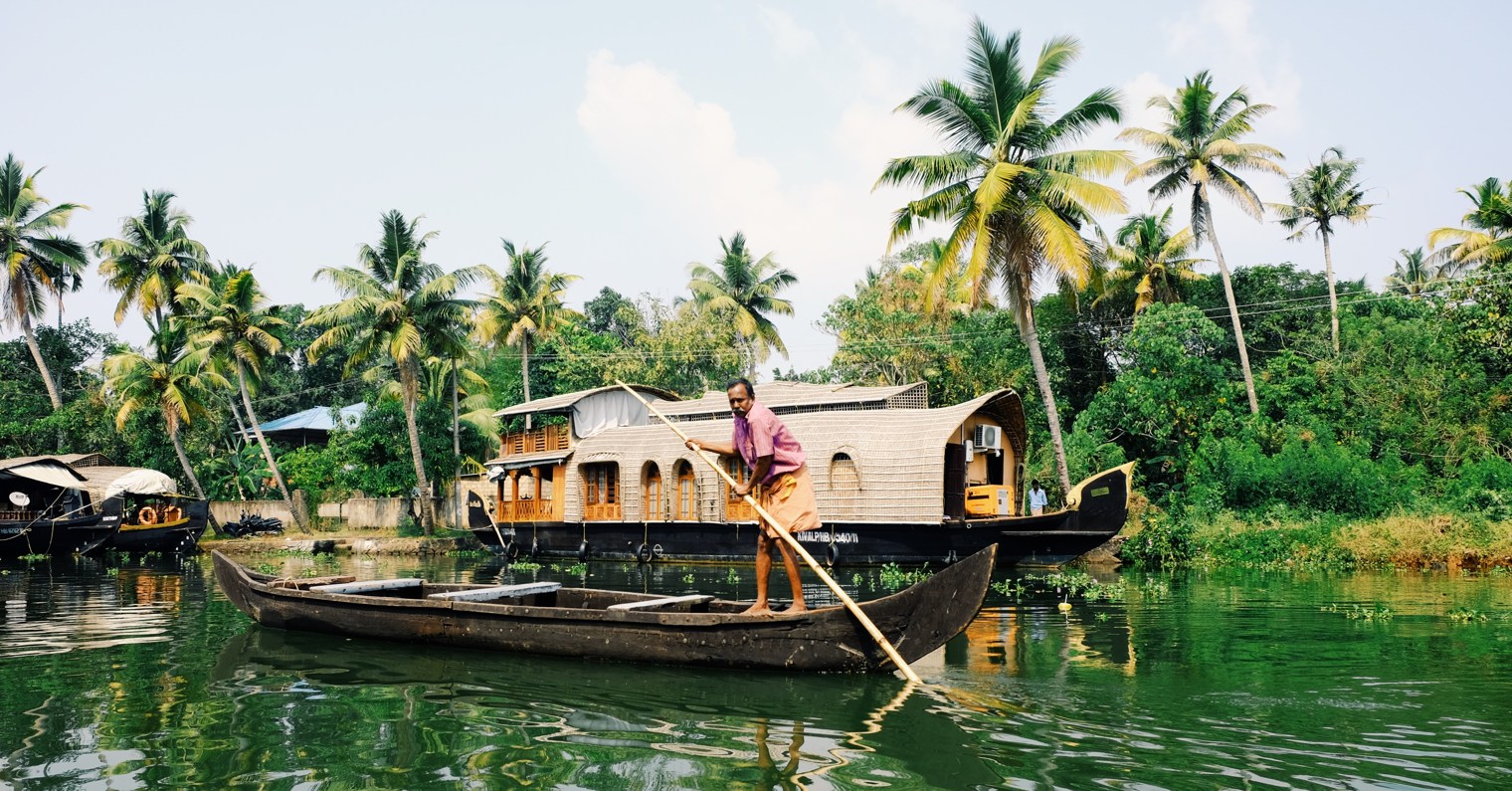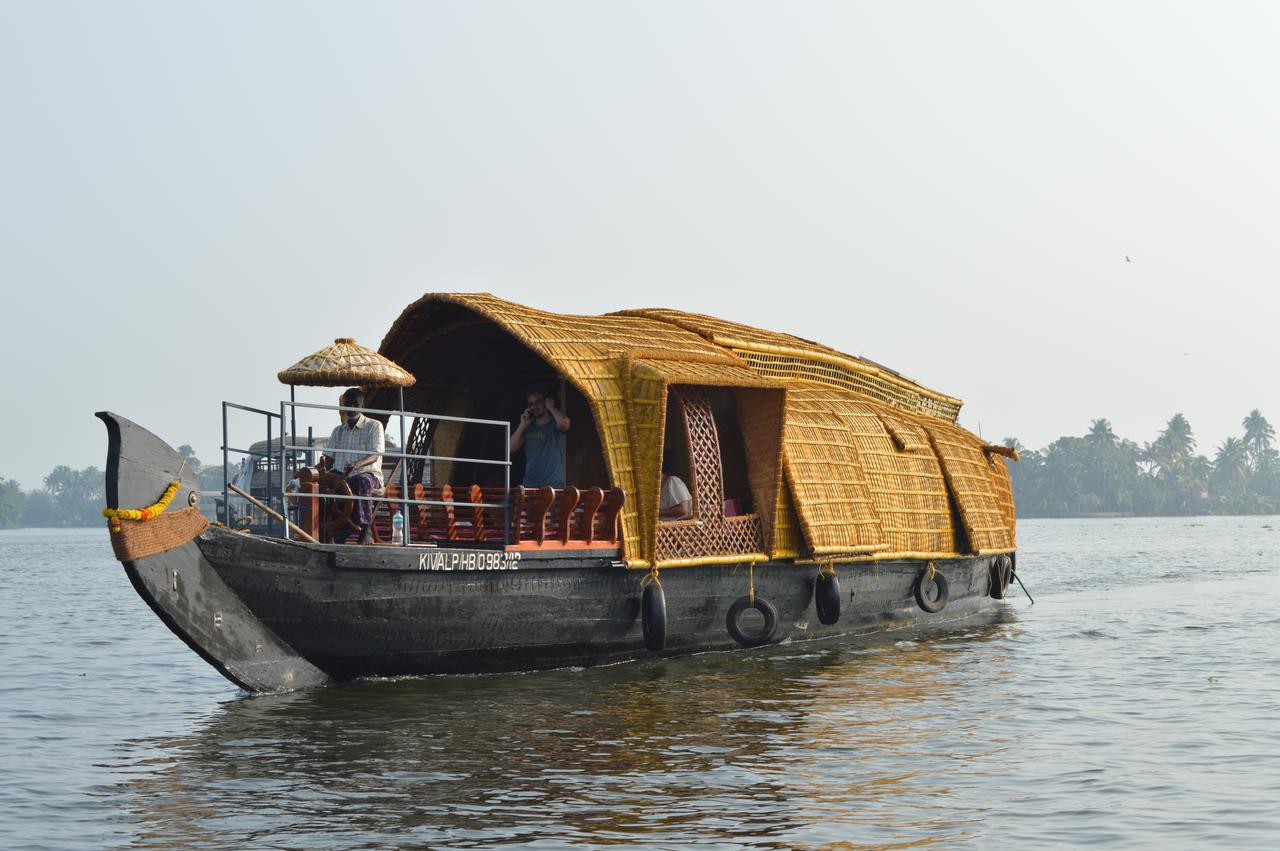Avoid mass tourism on an eco boat in the backwaters of Kerala
Disclosure: Bear in mind that some of the links in this post are affiliate links and if you go through them to make a purchase we will earn a commission at no additional cost to you. We chose these companies / hotels because of their quality and not because of the commission we receive from your purchases.
A fresh breeze blows across your face as the palm trees on the shore sway with the rhythm of the waves. The boat glides through the canals, and along the shore, you see people washing their clothes as if time has stood still. Believe it or not, this tranquil scene is set in incredible India, during a boat trip through the backwaters of Kerala. For decades, tourists from all over the world have flocked to southern India to admire this endless network of canals and rivers—an activity that draws hundreds of visitors daily. We’ll now share how you can avoid the crowds and, at the same time, minimize your environmental impact.
Google ‘houseboat backwaters,’ and you'll find countless options. From a short afternoon cruise to a whole week on the water, whether privately or with a group, the choices are overwhelming. It quickly became clear to us that there might be too many options. When we asked other travelers and locals for advice, we were told that if you're not careful, you could end up in a traffic jam to get onto the water and later be surrounded by the constant hum of rattling engines for the rest of the day.
2000 boats a day
Houseboat cruises are a massive industry, and tourists pay a premium for a night aboard a traditional boat. To meet the demand, hundreds of old transport boats have been retrofitted with bedrooms, toilets, kitchens, and motors. Consequently, nearly 2000 boats each day discharge their toilet waste into the canals. The air and water are heavily polluted by exhaust fumes from the diesel engines, and as if that weren’t bad enough, most operators dump their garbage, including plastic bottles, into the water. Over 10,000 plastic bottles end up in the backwaters every day.
Eco-friendly alternative
While searching for an eco-friendly alternative, we discovered Thara's Eco Houseboat. Thara’s Eco Houseboat is built in the traditional Kerala style, inspired by the Kettuvallam. This solar-powered houseboat is an eco-conscious option, and we spent two nights aboard.
We could have happily stayed longer. It was incredible to sit on the sun deck and watch the scenery pass by. If you stay for only a few nights, you’ll likely be in the busier parts of the waterways, but we ventured farther and were often the only boat in sight. The food was amazing, with all local dishes, and the boat was very comfortable.
Best time to visit
Winter is the high season in Kerala, starting in September and ending in March. The weather remains pleasant and cool during this period, and most people agree that it’s the perfect time for a holiday in Kerala. Summer begins in March and continues until May. During this season, there’s more rain, and the weather is warm and humid. However, it’s not as humid as during the monsoon, and you’ll encounter far fewer tourists.
The rainy season starts in June and lasts until August. Heavy rains refresh the entire region and make it a lush, green paradise, but thunderstorms are common during this time. We don’t recommend visiting Kerala in this season. Click here for more climate details in Alleppey.